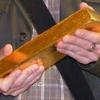Pharmacological effects of Salvia miltiorrhiza (Danshen) on cerebral infarction
Tsai-Hui Lin and Ching-Liang HsiehEmail author (2010)
Danshen, the dried root of Salvia miltiorrhiza, is a Chinese medicine used to promote blood flow and treat vascular disease. The present article reviews the pharmacological effects of Danshen on cerebral infarction and possible interactions between Danshen and Western drugs. Danshen may reduce or prolong the development of atherosclerosis and may have anti-hypertensive and anti-platelet aggregation effects, which prevent cerebral infarction. Danshen may enhance endogenous anti-oxidative enzyme activities such as the expression of endothelial nitric oxide synthase and may scavenge oxygen free radicals. Prevention and treatment of cerebral infarction by Danshen involves multiple pathways, including anti-atherosclerosis, anti-hypertension, anti-platelet aggregation, anti-inflammatory and anti-oxidative effects.
- glutamate and dopamine are big players in anhedonia
Salviae miltiorrhizae radix increases dopamine release of rat and pheochromocytoma PC12 cells.
Kim CH1, Koo BS, Kim KO, Kim JK, Chang YC, Lee IS. (2006)
The Radix of Salvia miltiorrhiza Bunge (Labiatae) (SMR), an eminent herb, is often included as an ingredient in various herbal remedies recommended for vascular circulation therapies. The present study investigated the effect of SMR on dopaminergic neurotransmission. Various extracts prepared from the stems of SMR were tested for cytotoxic activity on pheochromocytoma PC12 cells using the XTT assay method. The ethanol extract (IC50 > 100 microg/mL), water extract (IC50 > 100 microg/mL) and chloroform (IC50 = 90 microg/mL) fraction exhibited weak cytotoxic activity. However, the butanol (IC50 = 80 microg/mL) and ethyl acetate (EtOAc; IC50 = 70 microg/mL) fractions exhibited strong cytotoxic activity. Also, the extracts and fractions were investigated for dopamine release effects. The EtOAc fraction showed a stronger stimulatory effect on dopamine release activity than the other fractions. The effect of the crude EtOAc fraction (50 microg/mL) of SMR on K+ (20 mm)-stimulated dopamine (DA) release from rat striatal slices was compared with amphetamine (10(-4) m) using high-performance liquid chromatography with electrochemical detection to measure endogenous DA. The EtOAc fraction significantly increased K+ -stimulated DA release (p < 0.001) from rat striatal slices when compared with K+ -stimulated alone. The EtOAc fraction potentiated the effect of amphetamine on K+ -stimulated DA release (p < 0.001) when compared with amphetamine alone. To examine whether in vitro the EtOAc fraction treatment induces DA release in PC12 cells, the role of protein kinases was investigated in the induction of the EtOAc fraction-mediated events by using inhibitors of protein kinase C (PKC), mitogen activated protein kinase (MAP kinase) or protein kinase A (PKA). The PKC inhibitors chelerythrine (50 nm and 100 nm) and Ro31-8220 (100 nm) and the MAP kinase kinase inhibitor, PD98059 (20 microm), inhibited the ability of the EtOAc fraction of SMR to elicit the EtOAc fraction-stimulated DA release. The PKC activator, 12-O-tetradecanoyl phorbol 13-acetate (TPA, 100 nm) mimicked the ability of the EtOAc fraction of SMR to elicit DA release. In contrast, a selective PKA inhibitor, 50 microm Rp-8-Br-cAMP, blocked the development of EtOAc fraction-stimulated DA release. It was demonstrated that the EtOAc fraction of SMR stimulated DA release. Therefore the mechanism by which the EtOAc fraction of SMR induced the enhancement in EtOAc fraction-stimulated DA release is apparent.
Excitotoxicity effects of glutamate on human neuroblastoma SH-SY5Y cells via oxidative damage.
Sun ZW1, Zhang L, Zhu SJ, Chen WC, Mei B. (2010)
OBJECTIVE:
To investigate the mechanisms of excitotoxic effects of glutamate on human neuroblastoma SH-SY5Y cells.
METHODS:
SH-SY5Y cell viability was measured by MTT assay. Other damaged profile was detected by lactate dehydrogenase (LDH) release and by 4', 6-diamidino-2-phenylindole (DAPI) staining. The cytosolic calcium concentration was tested by calcium influx assay. The glutamate-induced oxidative stress was analyzed by cytosolic glutathione assay, superoxide dismutase (SOD) assay and extracellular malondialdehyde (MDA) assay.
RESULTS:
Glutamate treatment caused damage in SH-SY5Y cells, including the decrease of cell viability, the increase of LDH release and the alterations of morphological structures. Furthermore, the concentration of cytoplasmic calcium in SH-SY5Y cells was not changed within 20 min following glutamate treatment, while cytosolic calcium concentration significantly increased within 24 h after glutamate treatment, which could not be inhibited by MK801, an antagonist of NMDA receptors, or by LY341495, an antagonist of metabotropic glutamate receptors. On the other hand, oxidative damage was observed in SH-SY5Y cells treated with glutamate, including decreases in glutathione content and SOD activity, and elevation of MDA level, all of which could be alleviated by an antioxidant Tanshinone IIA (Tan IIA, a major active ingredient from a Chinese plant Salvia Miltiorrhiza Bge).
CONCLUSION:
Glutamate exerts toxicity in human neuroblastoma SH-SY5Y cells possibly through oxidative damage, not through calcium homeostasis destruction mediated by NMDA receptors.
Methylation and its role in the disposition of tanshinol, a cardiovascular carboxylic catechol from Salvia miltiorrhiza roots (Danshen).
Tian DD1, Jia WW2, Liu XW2, Wang DD3, Liu JH2, Dong JJ2 (2015)
AIM:
Tanshinol is an important catechol in the antianginal herb Salvia miltiorrhiza roots (Danshen). This study aimed to characterize tanshinol methylation.
METHODS:
Metabolites of tanshinol were analyzed by liquid chromatography/mass spectrometry. Metabolism was assessed in vitro with rat and human enzymes. The major metabolites were synthesized for studying their interactions with drug metabolizing enzymes and transporters and their vasodilatory properties. Dose-related tanshinol methylation and its influences on tanshinol pharmacokinetics were also studied in rats.
RESULTS:
Methylation, preferentially in the 3-hydroxyl group, was the major metabolic pathway of tanshinol. In rats, tanshinol also underwent considerable 3-O-sulfation, which appeared to be poor in human liver. These metabolites were mainly eliminated via renal excretion, which involved tubular secretion mainly by organic anion transporter (OAT) 1. The methylated metabolites had no vasodilatory activity. Entacapone-impaired methylation did not considerably increase systemic exposure to tanshinol in rats. The saturation of tanshinol methylation in rat liver could be predicted from the Michaelis constant of tanshinol for catechol-O-methyltransferase (COMT). Tanshinol had low affinity for human COMT and OATs; its methylated metabolites also had low affinity for the transporters. Tanshinol and its major human metabolite (3-O-methyltanshinol) exhibited negligible inhibitory activities against human cytochrome P450 enzymes, organic anion transporting polypeptides 1B1/1B3, multidrug resistance protein 1, multidrug resistance-associated protein 2, and breast cancer resistance protein.
CONCLUSION:
Tanshinol is mainly metabolized via methylation. Tanshinol and its major human metabolite have low potential for pharmacokinetic interactions with synthetic antianginal agents. This study will help define the risk of hyperhomocysteinemia related to tanshinol methylation.
- might also help with arthritis?
Upregulation of Collagen Expression via PPARβ/δ Activation in Aged Skin by Magnesium Lithospermate B from Salvia miltiorrhiza.
Jung YR1, Lee EK1, Kim DH1, Park CH1,2, Park MH1, Jeong HO1 (2015)
This study investigated the agonistic activity of magnesium lithospermate B (1), isolated from Salvia miltiorrhiza, on peroxisome proliferator-activated receptor (PPARβ/δ) and the expressions of collagen genes (COL1A1 and COL3A1) and transforming growth factor-β1 (TGF-β1) in models of skin aging. The action of compound 1 as a PPARβ/δ agonist was determined by reporter gene assay, immunostaining, and Western blotting. To determine the antiaging effects of compound 1 on skin, aged Sprague-Dawley rat skin and ultraviolet B (UVB)-irradiated human skin fibroblasts were used. The results show that 1 presented a marked enhancement of both nuclear protein levels and activity of PPARβ/δ in fibroblasts. In addition, 1 prevented downregulation of PPARβ/δ activity in aged rat skin and UVB-induced fibroblasts. Furthermore, 1 increased the expressions of COL1A1, COL3A1, and TGF-β1 in vivo and in a cell culture system. Therefore, the present study shows that compound 1 prevents collagen degradation in aged rat skin and UVB-exposed fibroblasts through PPARβ/δ activation. The therapeutic and cosmetic applications of compound 1 need further investigation.






























































